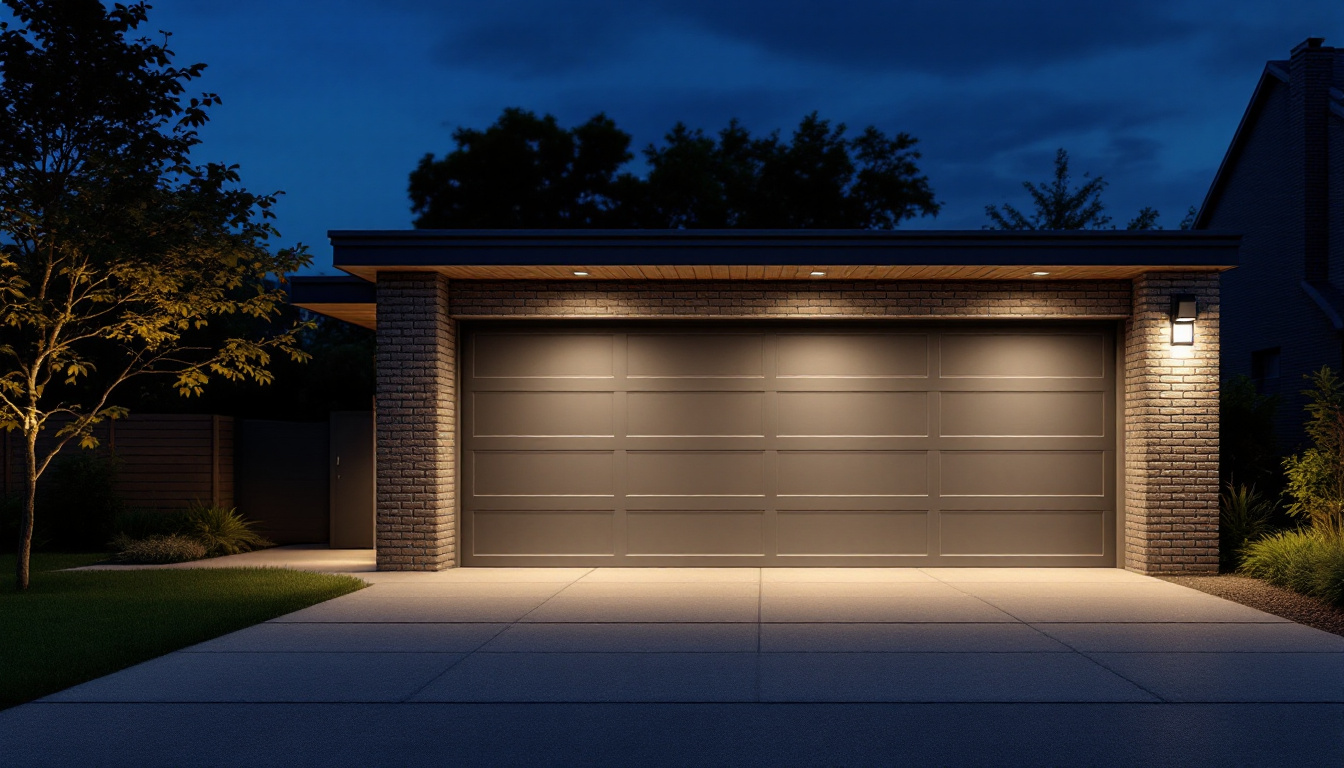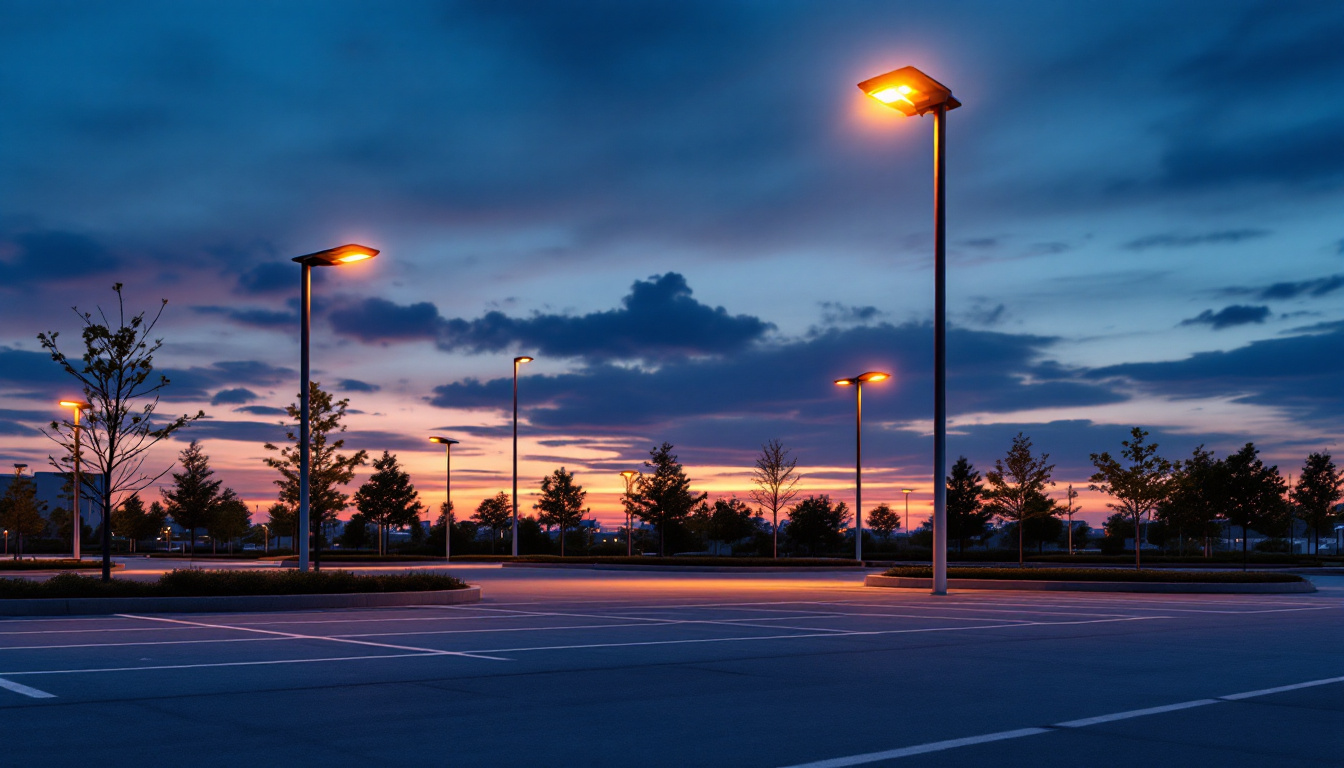
As outdoor lighting projects become increasingly popular among homeowners, the demand for efficient and effective solutions has surged. One such solution is the outdoor garage light with a motion sensor. While these lights offer numerous advantages, including enhanced security and energy efficiency, improper installation or selection can lead to costly mistakes. This article aims to guide lighting contractors through the essential considerations to avoid pitfalls in their lighting projects.
Motion sensor lights are designed to detect movement within a specific range and automatically turn on when someone approaches. This technology can significantly enhance security and convenience, especially in outdoor settings like garages. By illuminating dark areas, these lights not only deter potential intruders but also provide a safer environment for homeowners as they navigate their properties at night.
There are various types of motion sensors, including passive infrared (PIR), microwave, and dual technology sensors. Each type has its unique advantages and limitations, making it crucial for contractors to understand how they work before making a selection. For instance, while PIR sensors are generally more energy-efficient, microwave sensors can detect motion through obstacles, making them suitable for more complex environments.
Passive infrared sensors detect changes in heat, making them ideal for outdoor applications where body heat is a reliable indicator of movement. These sensors are particularly effective in areas with predictable foot traffic, such as driveways or pathways. On the other hand, microwave sensors emit microwave pulses and detect motion based on the reflection of those waves. This allows them to cover larger areas and even detect movement through walls or foliage. Dual technology sensors combine both methods, offering enhanced reliability by reducing false triggers. They are particularly useful in environments where pets or small animals might inadvertently activate a single-type sensor.
When selecting motion sensors, it is essential to consider their range and sensitivity settings. Some sensors can cover large areas, while others are more suited for smaller spaces. Understanding the specific needs of the project will help in choosing the right sensor to avoid coverage gaps or unnecessary activation. For example, a sensor with a longer range might be ideal for a large backyard, while a more sensitive sensor could be perfect for a narrow walkway. Additionally, many modern motion sensors come equipped with adjustable sensitivity settings, allowing users to fine-tune their devices according to the surrounding environment and specific requirements.
Moreover, the installation height and angle of the motion sensor can greatly influence its effectiveness. Ideally, sensors should be mounted at a height that maximizes their field of view while minimizing the chances of obstruction from trees, fences, or other structures. Some advanced models even feature customizable detection zones, enabling users to focus on specific areas of interest while ignoring irrelevant movements, such as passing cars or swaying branches. This level of precision not only enhances security but also optimizes energy efficiency by ensuring that lights are activated only when truly necessary.
Even seasoned lighting contractors can make mistakes when planning outdoor lighting projects. Recognizing common pitfalls can help in avoiding costly errors that may arise during installation or after the project is completed.
One of the most significant mistakes is failing to plan adequately. This includes not assessing the area where the lights will be installed, neglecting to consider the layout of the garage, and overlooking the specific needs of the homeowner. A thorough site evaluation can help in determining the best locations for motion sensors, ensuring optimal coverage and functionality. Additionally, taking into account the natural light sources and shadows created by trees or structures can further enhance the effectiveness of the lighting design. By mapping out the desired ambiance and functionality, contractors can create a cohesive lighting scheme that not only illuminates but also enhances the aesthetic appeal of the outdoor space.
Not all outdoor lighting fixtures are created equal. Selecting fixtures that are not designed for outdoor use can lead to premature failure, increased maintenance costs, and safety hazards. It is crucial to choose lights that are weather-resistant and suitable for the intended environment. Furthermore, considering the energy efficiency of the fixtures is equally important; opting for LED lights can significantly reduce energy consumption while providing longer-lasting illumination. A well-chosen fixture will not only withstand the elements but also complement the architectural style of the home, creating a harmonious look that adds value to the property.
Local building codes and regulations can significantly impact outdoor lighting projects. Ignoring these guidelines can lead to fines, required modifications, or even project delays. Contractors should familiarize themselves with local regulations regarding outdoor lighting to ensure compliance and avoid potential issues. This includes understanding restrictions on light pollution, which can affect both wildlife and neighboring properties. By adhering to these regulations, contractors can design lighting solutions that are both functional and environmentally responsible, promoting a sustainable approach to outdoor illumination.
To ensure a successful outdoor garage lighting project, contractors should follow best practices when selecting motion sensor lights. These practices can help in making informed decisions that enhance the overall quality and effectiveness of the installation.
Before selecting motion sensor lights, it is essential to evaluate the environment where they will be installed. Factors such as the amount of natural light, potential obstructions, and the typical foot traffic in the area can influence the choice of sensor type and placement. For instance, areas with frequent wildlife activity may require more sensitive sensors to avoid false triggers. Additionally, the proximity of the lights to other structures, trees, or fences can affect the sensor’s field of view, necessitating a careful assessment to ensure optimal performance. Analyzing the layout of the garage and surrounding areas can also help determine the best angles for light coverage, ensuring that no dark spots remain where safety could be compromised.
Energy efficiency is a critical consideration in any lighting project. Choosing LED motion sensor lights can significantly reduce energy consumption while providing adequate illumination. Additionally, many modern motion sensors come equipped with adjustable settings, allowing contractors to customize sensitivity and duration to further enhance energy savings. Beyond just the choice of bulb, contractors should also consider the wattage and lumens output to ensure that the lights are not only energy-efficient but also bright enough to deter unwanted activity. Furthermore, integrating solar-powered motion sensor lights can be an excellent option for those looking to minimize their carbon footprint, as they harness renewable energy and reduce reliance on the electrical grid.
Before finalizing the installation, it is advisable to test the motion sensor lights in various conditions. This includes checking their responsiveness during the day and night, as well as under different weather conditions. Testing can help identify any potential issues and ensure that the lights function as intended. It is also beneficial to simulate different scenarios, such as varying levels of foot traffic or the presence of pets, to see how the sensors react. This thorough testing phase not only guarantees the reliability of the lights but also provides an opportunity to make adjustments to the sensor’s settings, ensuring that they are optimized for the specific environment. Additionally, considering the installation of a manual override feature can offer flexibility, allowing users to control the lights independently when necessary, such as during gatherings or maintenance work in the garage.
Proper installation is crucial for the effectiveness of outdoor garage lights with motion sensors. Following specific tips can help ensure that the installation process goes smoothly and that the lights perform optimally.
Installing motion sensors at the correct height and angle is vital for maximizing their effectiveness. Generally, sensors should be mounted between 6 to 10 feet above the ground, depending on the model and coverage area. Additionally, angling the sensors to cover the most critical areas, such as driveways or entry points, can enhance their performance.
Ensuring proper wiring and connectivity is essential for the longevity and functionality of outdoor lighting systems. Contractors should follow the manufacturer’s instructions for wiring and consider using weatherproof connectors to prevent moisture-related issues. Additionally, ensuring that the power supply is adequate for the number of lights installed can prevent flickering or failure.
Once the installation is complete, regular maintenance is necessary to keep the motion sensor lights functioning optimally. This includes cleaning the sensors to remove dirt and debris that may obstruct their functionality, checking for any signs of wear or damage, and replacing bulbs as needed. A maintenance schedule can help ensure that the lights remain in good working condition over time.
Outdoor garage lights equipped with motion sensors can significantly enhance the security of a property. When installed correctly, they serve as a deterrent to potential intruders and provide homeowners with peace of mind.
Strategic placement of motion sensor lights is critical for maximizing security benefits. Lights should be positioned to illuminate dark areas around the garage, entry points, and pathways leading to the home. Additionally, placing lights near windows and other vulnerable areas can further enhance security by making it more difficult for intruders to approach unnoticed.
Integrating motion sensor lights with other security systems, such as cameras or alarms, can create a comprehensive security solution. This integration allows for real-time monitoring and alerts, providing homeowners with immediate notifications of any suspicious activity. Contractors should consider recommending such integrations to clients looking to enhance their security measures.
Outdoor garage lights with motion sensors offer numerous benefits, including enhanced security and energy efficiency. However, avoiding common mistakes and following best practices is essential for successful lighting projects. By understanding motion sensor technology, planning adequately, and ensuring proper installation, lighting contractors can deliver high-quality solutions that meet the needs of their clients.
Ultimately, the goal is to create a safe and inviting environment for homeowners while maximizing the functionality of outdoor lighting systems. By adhering to the guidelines outlined in this article, contractors can avoid costly mistakes and ensure the success of their lighting projects.
Ready to elevate your outdoor garage lighting projects with the best in motion sensor technology? Look no further than LumenWholesale for all your lighting needs. Our extensive selection of spec-grade lighting products ensures you have access to the highest quality options at wholesale prices that can’t be beaten. With LumenWholesale, you can confidently avoid the common pitfalls of outdoor lighting projects, thanks to our top-notch, reliable solutions. Plus, with free shipping on bulk orders, you can stock up on superior lighting without the worry of hidden fees. Don’t compromise on quality or value—Wholesale Lighting at the Best Value is just a click away.

Discover essential tips and expert insights into fluorescent lighting fixtures with our comprehensive guide tailored for lighting contractors.

Discover the key features that distinguish top lighting contractors when it comes to selecting covers for outside electrical outlets.

Discover the essential best practices lighting contractors rely on when installing LED ceiling fixtures.

Explore the transformative journey of pole lights in parking lots, highlighting advancements in technology, energy efficiency, and design.